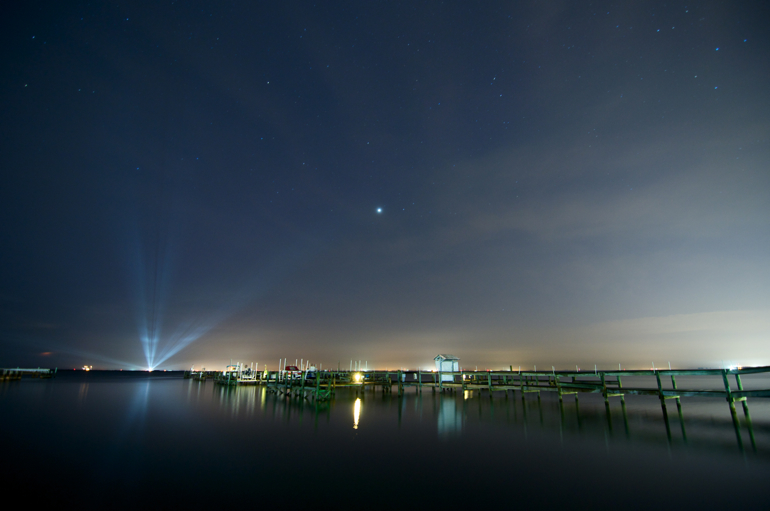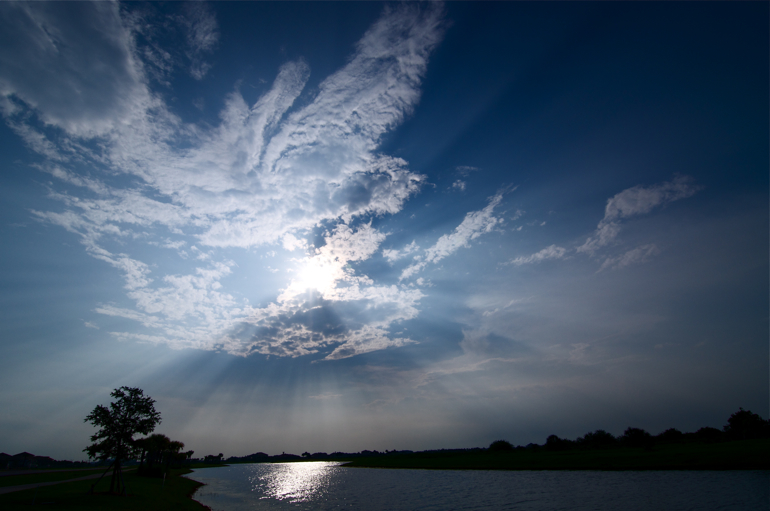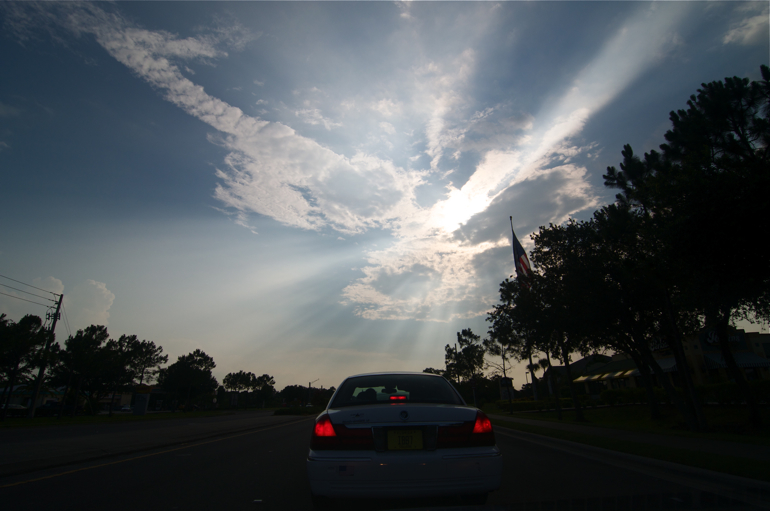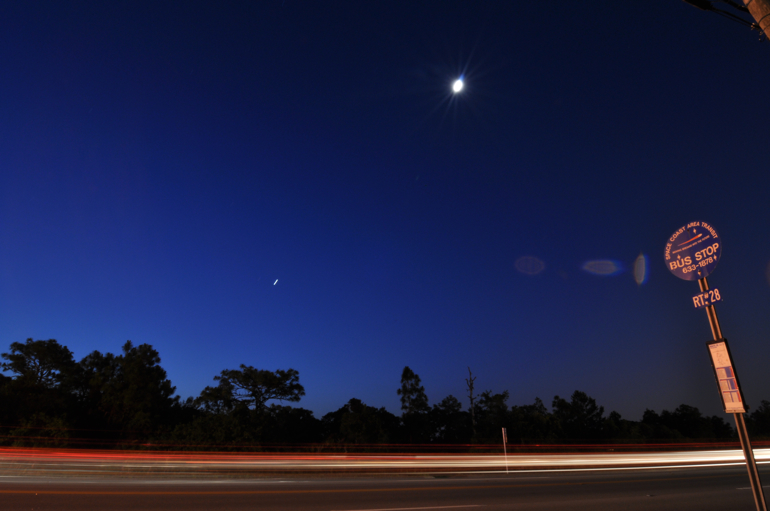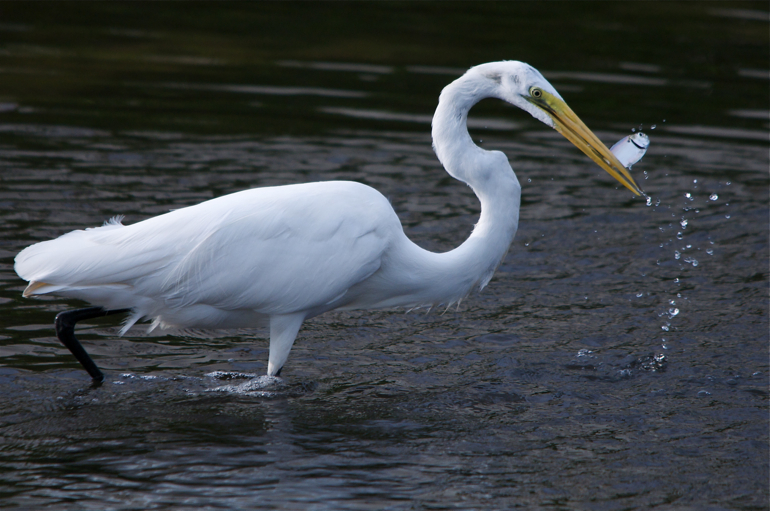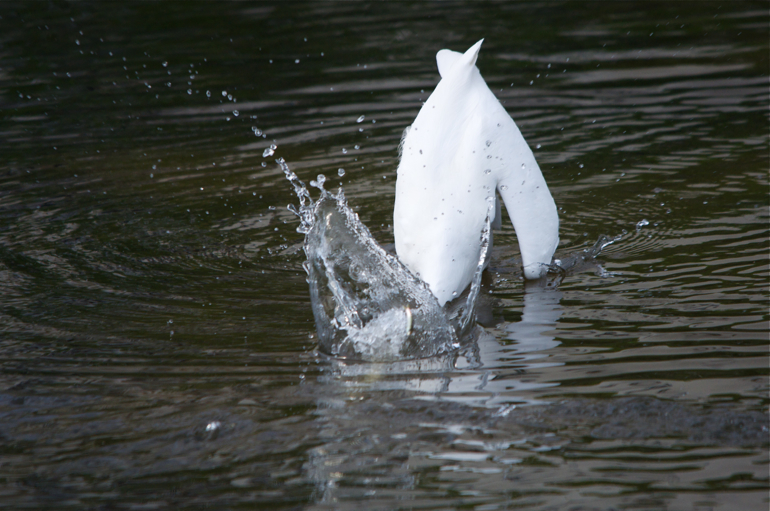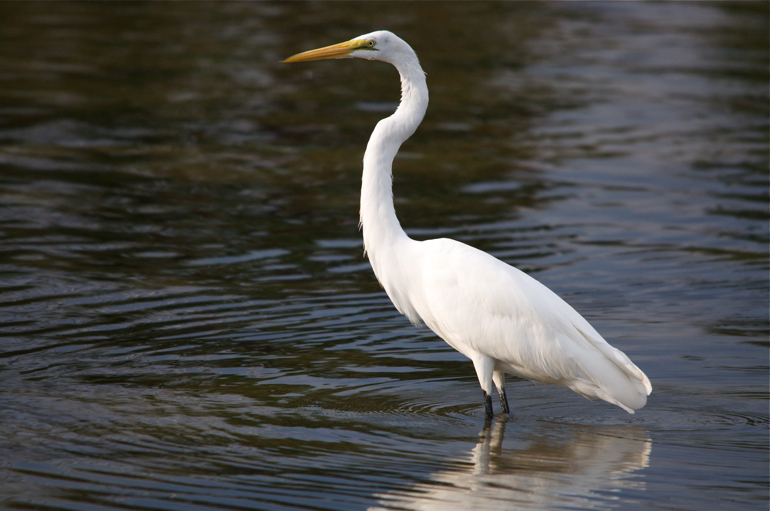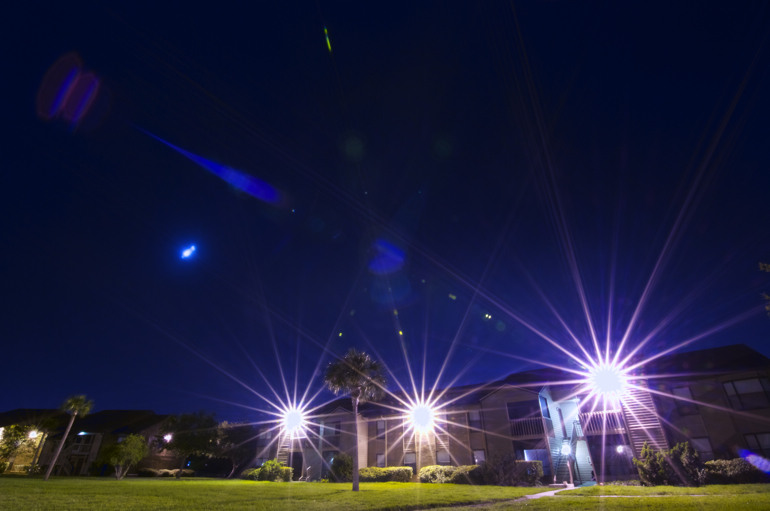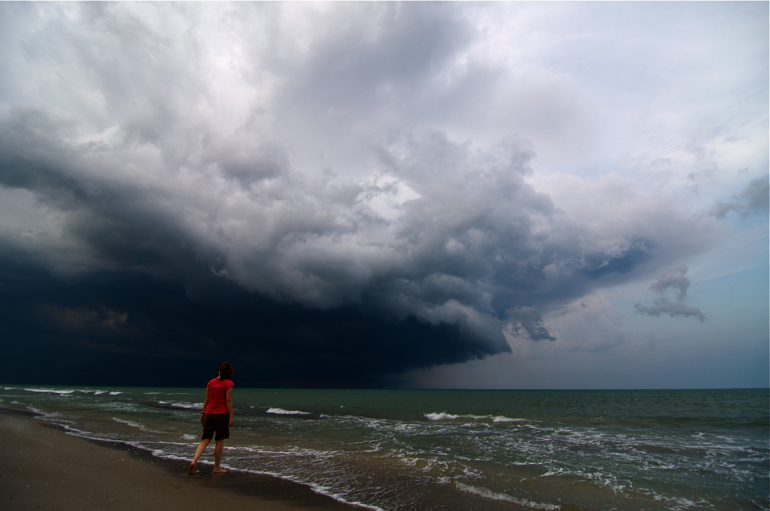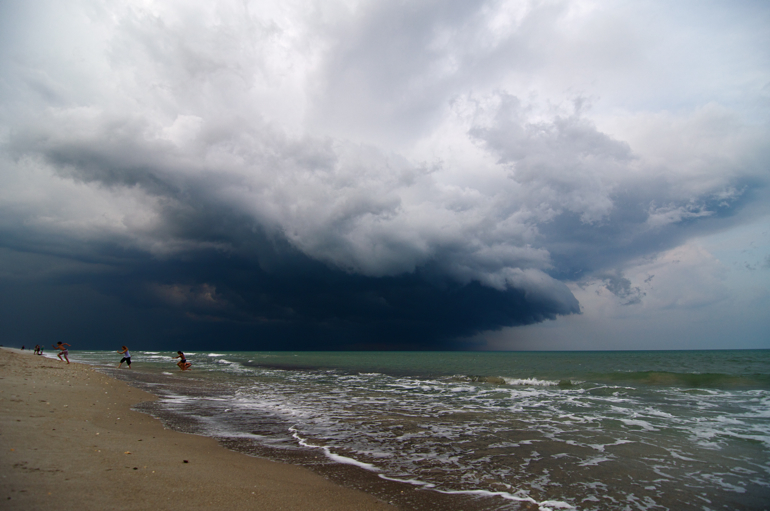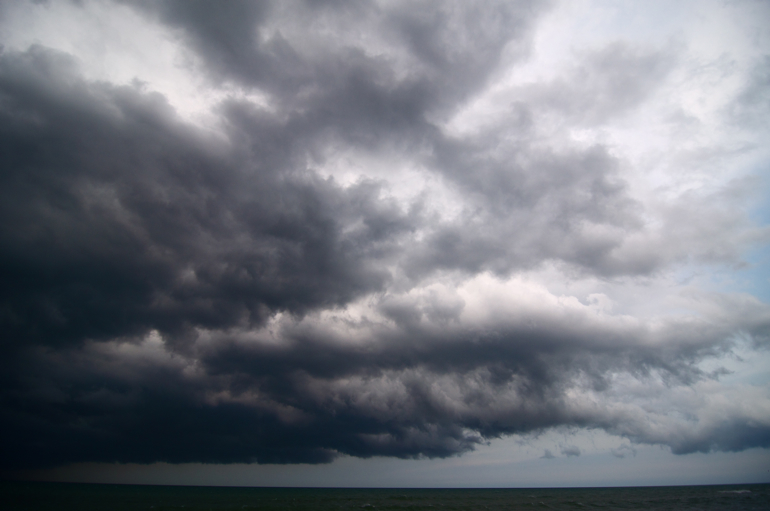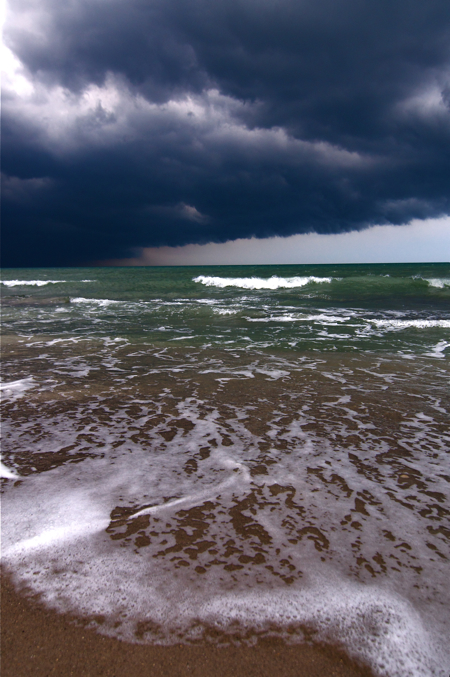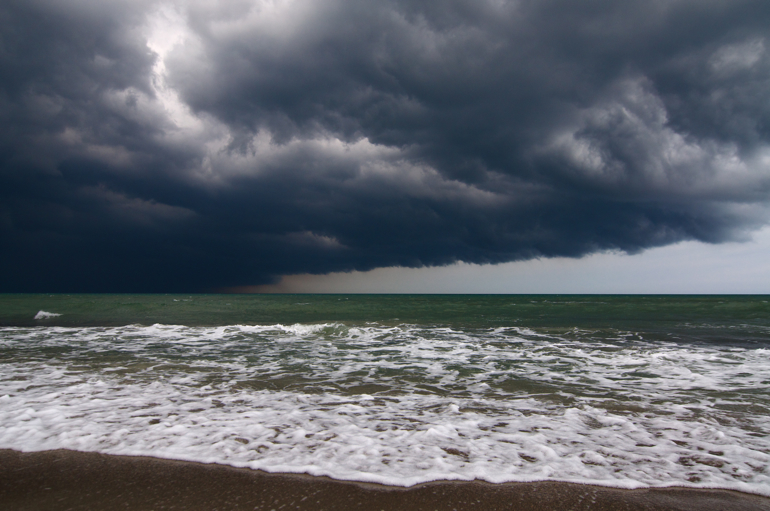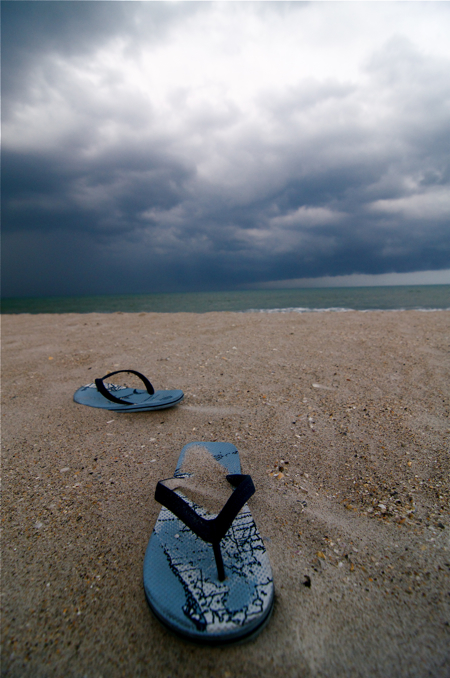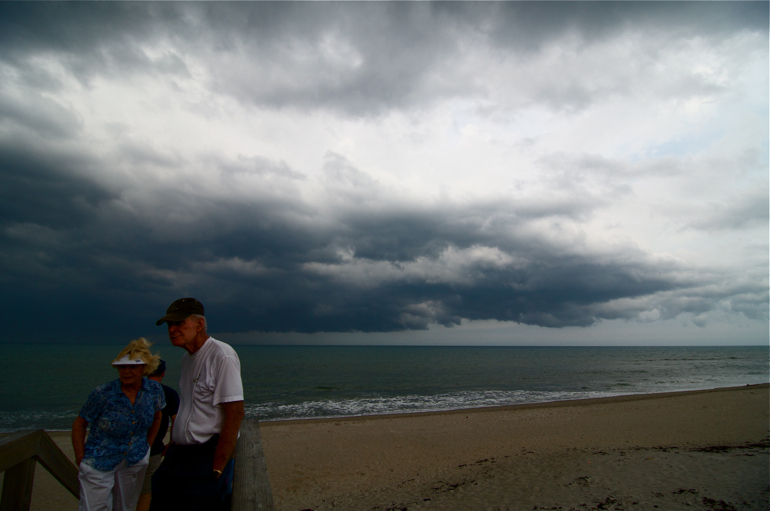Lightning from a thunderstorm, which was moving to the south, stretches through the sky above Merritt Island around 10:30 p.m. Endeavour's perch on launch pad 39A, which is bathed in light, is to left. The lightning delayed the fueling of the external tank, but it was not thought to threaten the launch time of 5:40 a.m.
My whole weekend revolved around NASA. I made the 45-minute drive to Titusville on Monday to scout out spots from which to photograph the launch of space shuttle Endeavour. I adjusted my sleeping schedule so I could observe the lighting conditions for two nights before liftoff. And I drove to Titusville again Tuesday to wait eight hours in the muggy Florida air for the real thing.
I began my trip about eight hours before the launch. But thunderstorms had moved into the area, and lightning was flashing in all directions. Distracted from my goal to photograph the launch, I stopped in the parking lot of a Baptist church in Melbourne to watch the lightning. But soon, I remembered my objective for the night, and I was off for Titusville once again.
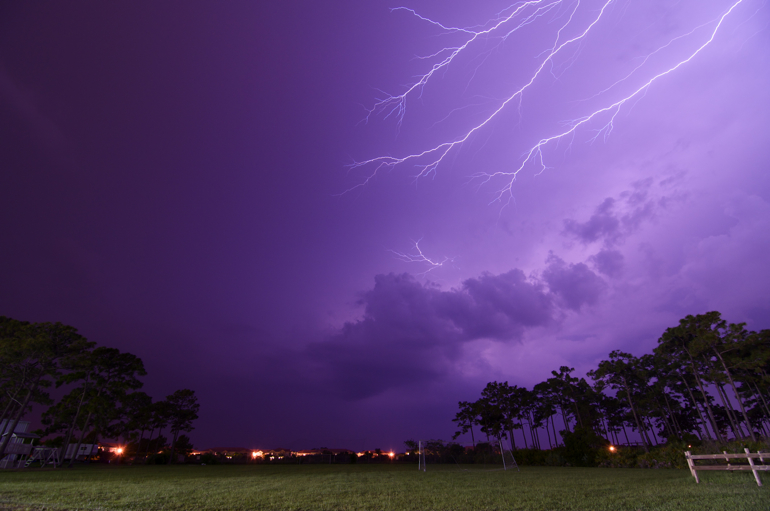
From the parking lot of the South Brevard Baptist Church in northern Melbourne, I took a few exposures of the lightning before trekking to North Brevard.
The rain and lightning delayed the start of fueling for the launch, but NASA still thought it would be ready in time for the 5:40 a.m. liftoff. In the meantime, I had set up three tripods on the shore of the Indian River at Space View Park, attempting to get photos of the lightning over the launch pad. The storm soon dissipated, and there was no more lightning to shoot. But I still had an idea to keep myself busy.
The International Space Station was to be visible about an hour before the launch, the start of a mission to the station. From my vantage point at Space View Park, the orbiting lab would have streaked across the sky for three minutes, just to the right of Endeavour's location on Kennedy Space Center's pad 39A. The prospect of capturing the shuttle and its destination in one image excited me. But that opportunity was still hours away.
The clouds from the lingering storms - with lightning still flashing far off to the west the whole night - cleared. The stars came out. Jupiter rose. The moon and Venus would soon follow, but first had to emerge from a veil of low-level clouds on the horizon. A meteor shot slowly across the sky, visible for nearly five seconds, as it headed in the direction of the launch pad. It was shaping up to be a gorgeous early morning.
But alas, so to speak, the stars did not align. Another leak of volatile hydrogen gas forced NASA to scrub the launch. The show was canceled, and I just had one thing to say: "It figures." I had a bad feeling all along.
But I was comforted by the fact that it could have been worse. I could have dedicated more than just a weekend and a few 45-minute drives for something that just was not meant to be.
There was a man from San Diego who decided at 8 o'clock Monday night that he would use frequent flier miles to make the trip across the country for a chance to see two launches: Endeavour on Wednesday and an Atlas V rocket on Thursday. He and his wife had been laid off, he said, so he had some free time on his hands to do something he has always wanted to do.
Then there was Mike from Tampa. He has seen launches before but never one in the pre-dawn or nighttime hours. I told him that he would be in for a real treat when, at ignition, the night turns into day. He had Wednesday off from his job with the Department of Homeland Security, so instead of doing some painting on his house, he spanned the state to watch his fellow government employees at work. "Do your job, guys. Do your job," he said when NASA announced that engineers were trying to fix the leak. Luckily for Mike, though, his gas was paid for by the $60 he won after putting $20 into a slot machine at the Seminole Hard Rock before leaving Tampa.
And a family of five - Mom, Dad and kids having set up a mini camp on the concrete - was nearly in tears when their Florida vacation, which revolved around the chance to see the launch, was soured a second time by shuttle Endeavour, which had been postponed Saturday, too. "Try to enjoy the rest of your vacation," another wannabe spectator told them. The mother said, "At least we got to see the Indian River twice."
But we all knew she was being facetious: The Indian River literally stinks. It's rotten. And another scrubbed shuttle launch figuratively stinks to the high heavens.
A trio of lights - the moon, the shuttle's launch pad and Jupiter - highlight a rib of clouds over Kennedy Space Center.
When I arrived in Titusville, clouds had blocked all stars from view, but by the time the launch was scrubbed around 2 a.m., many were visible. The weather was shaping up to be perfect for the launch. What a waste. The launch has been rescheduled for July 11.
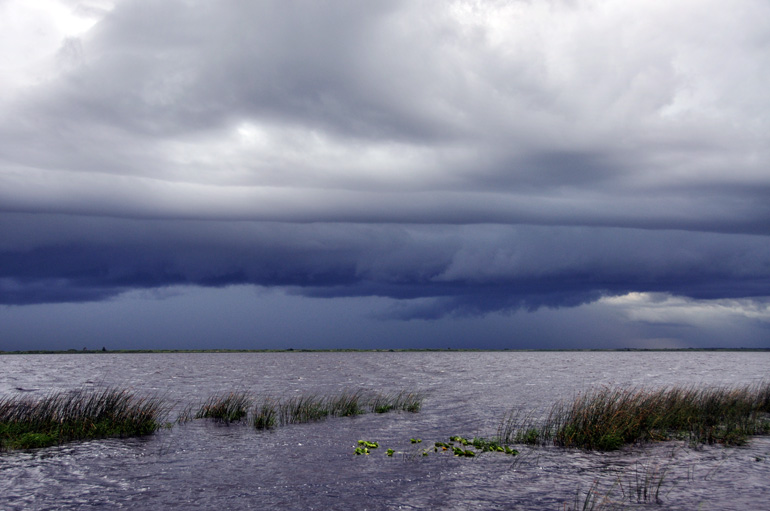


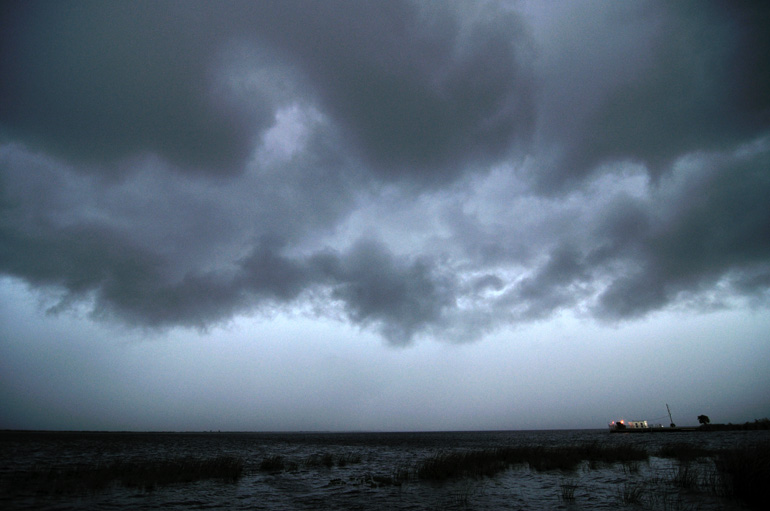



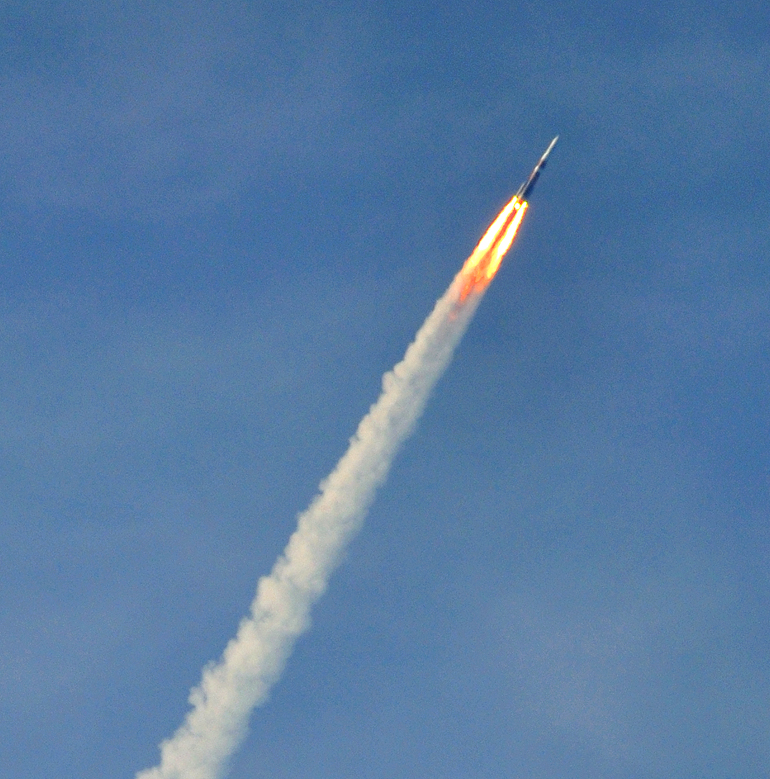
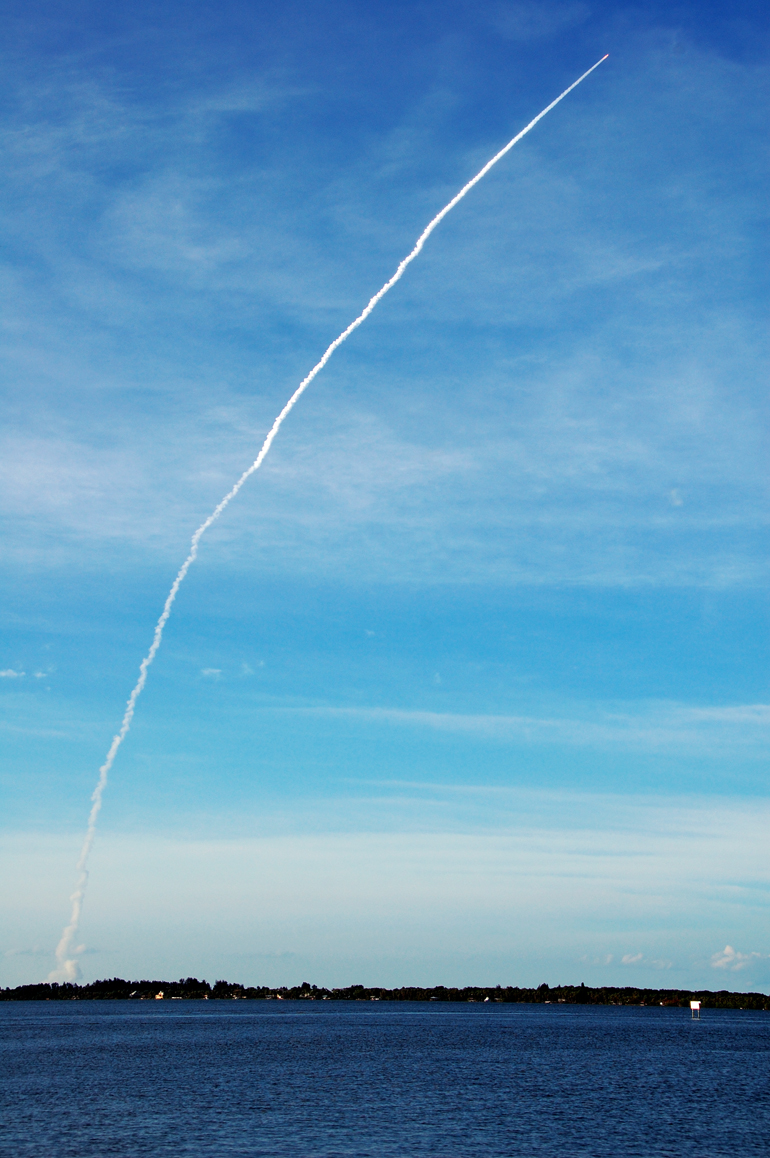
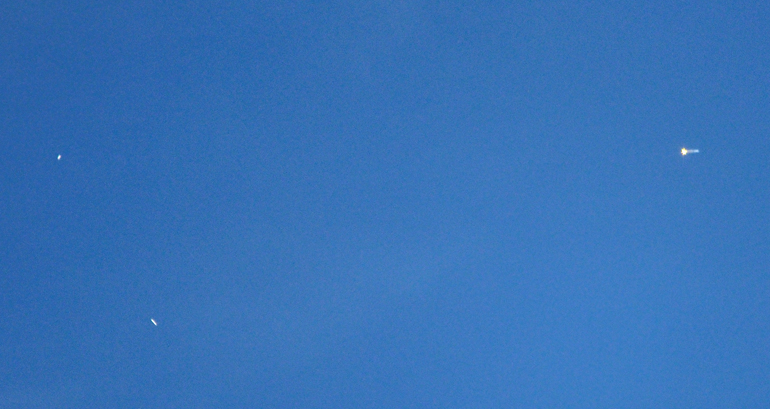
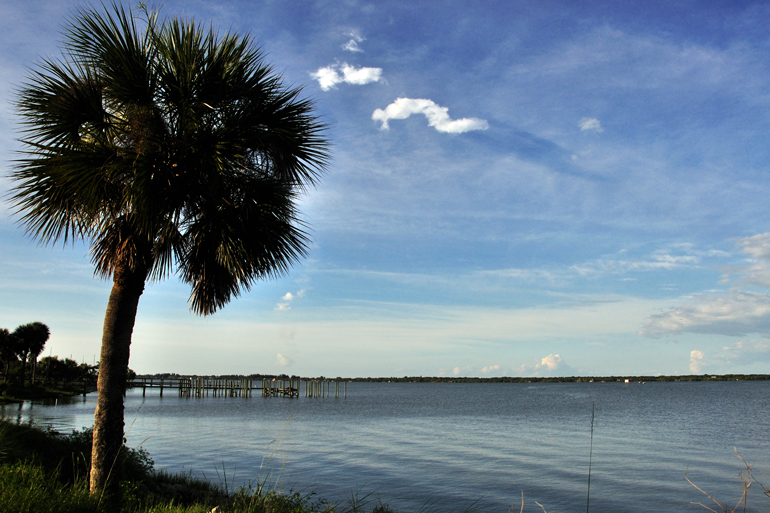
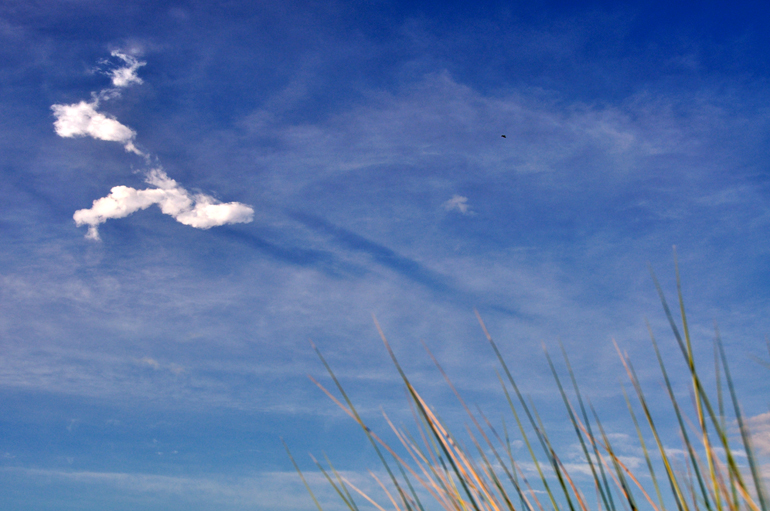
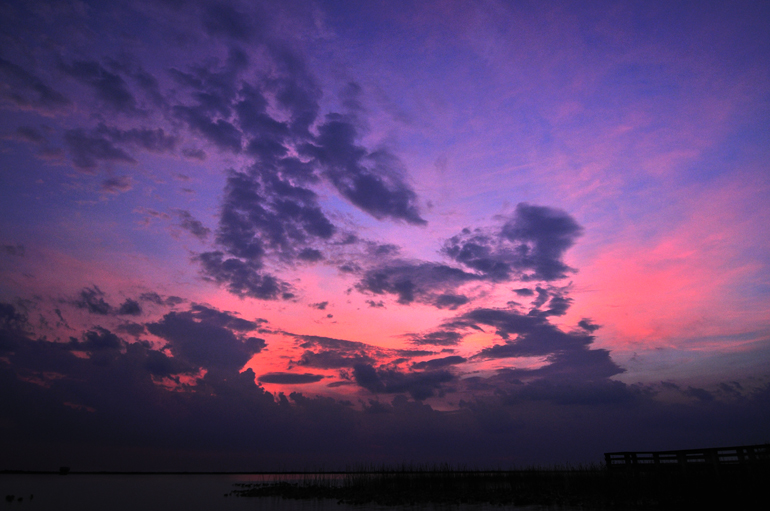
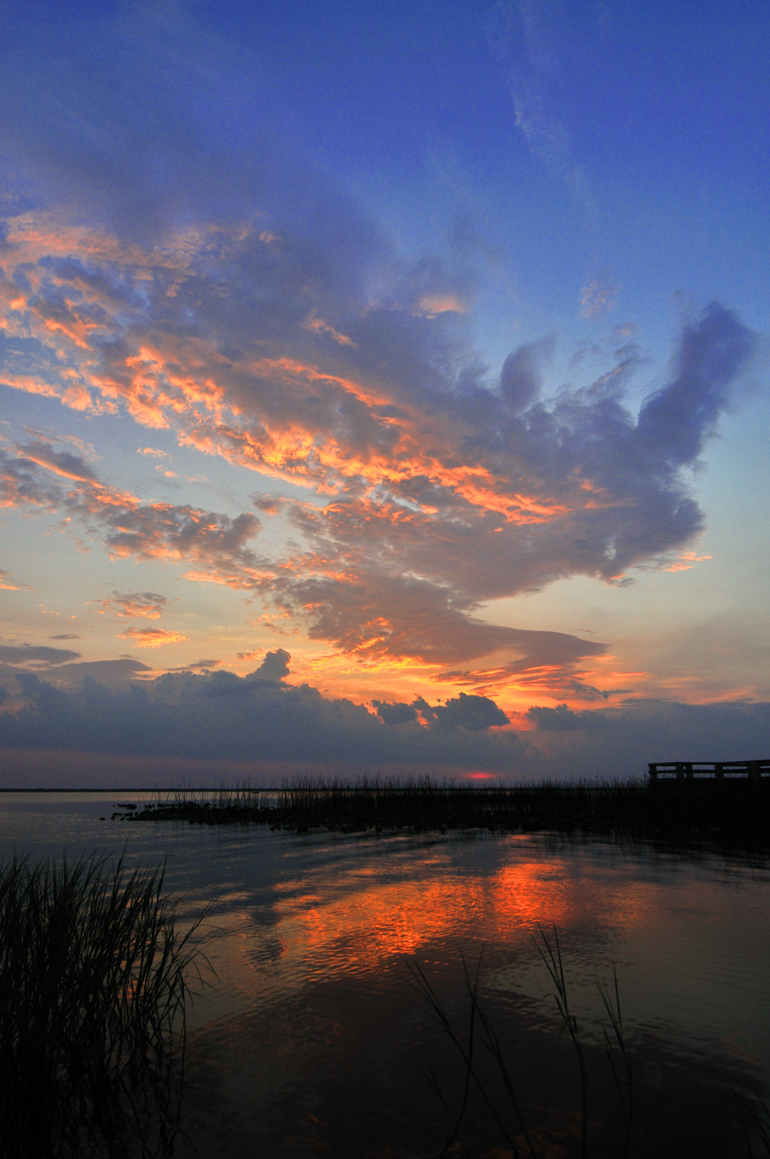
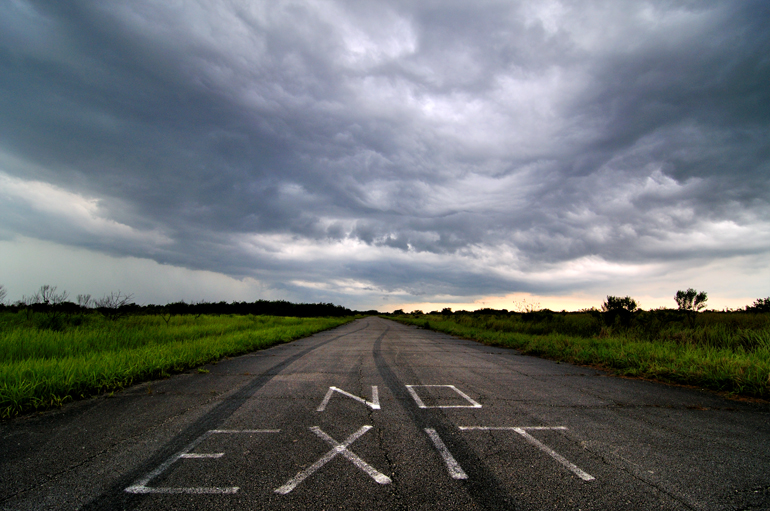
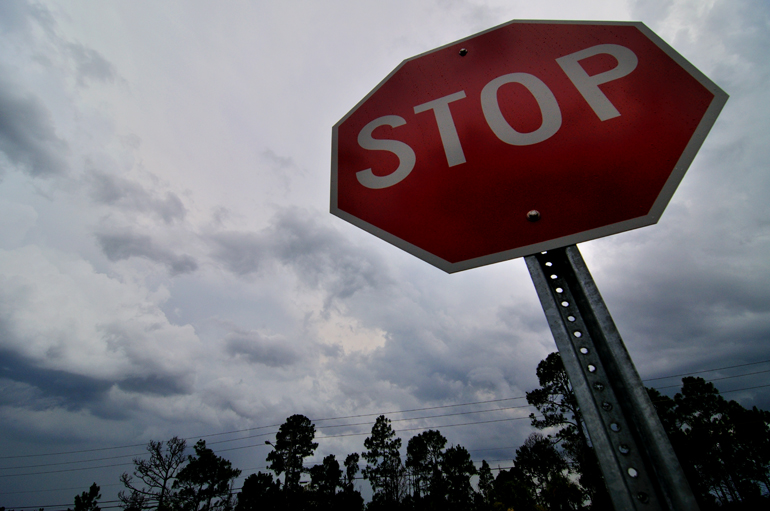
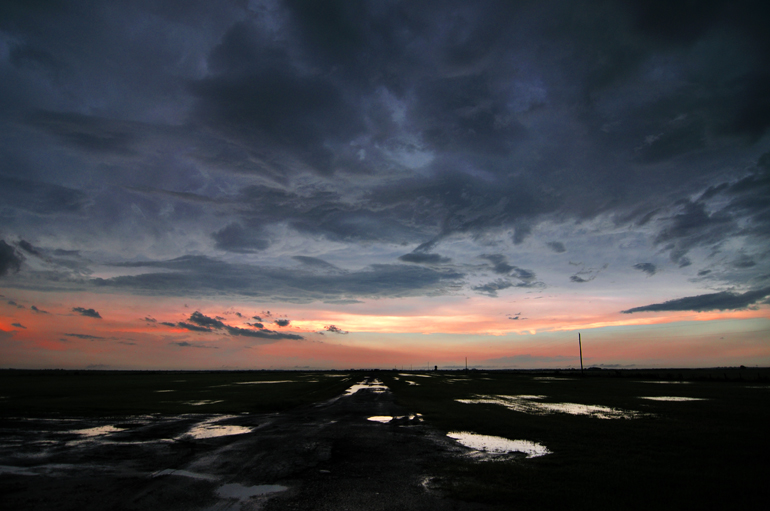
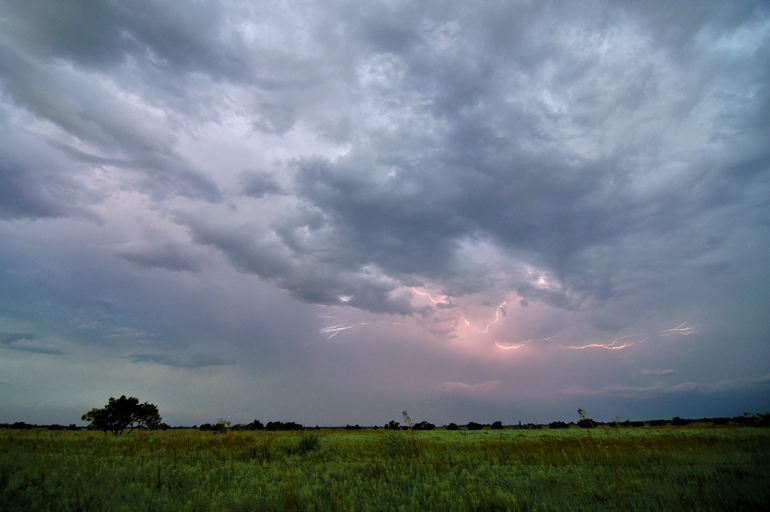

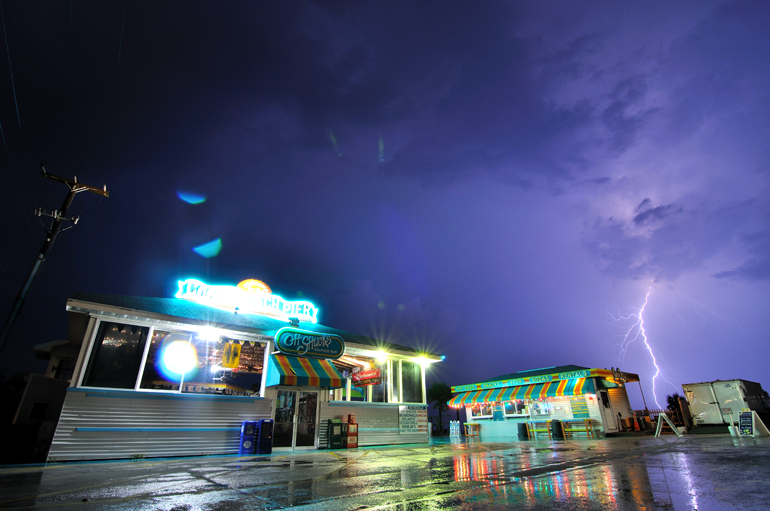
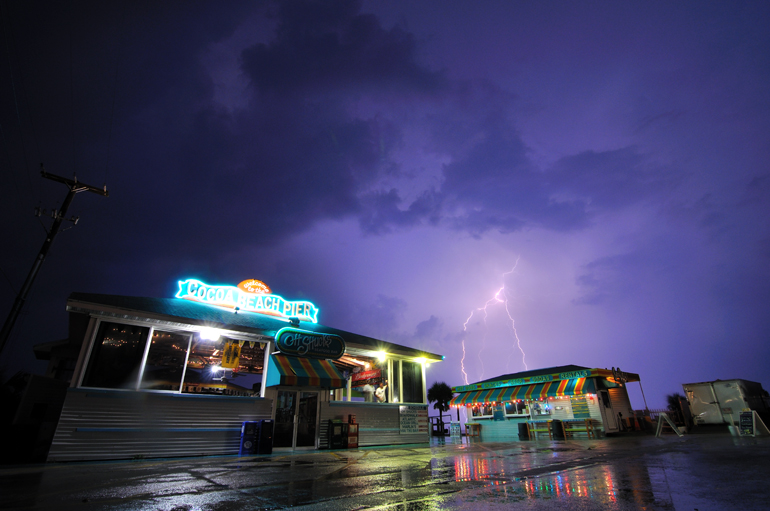

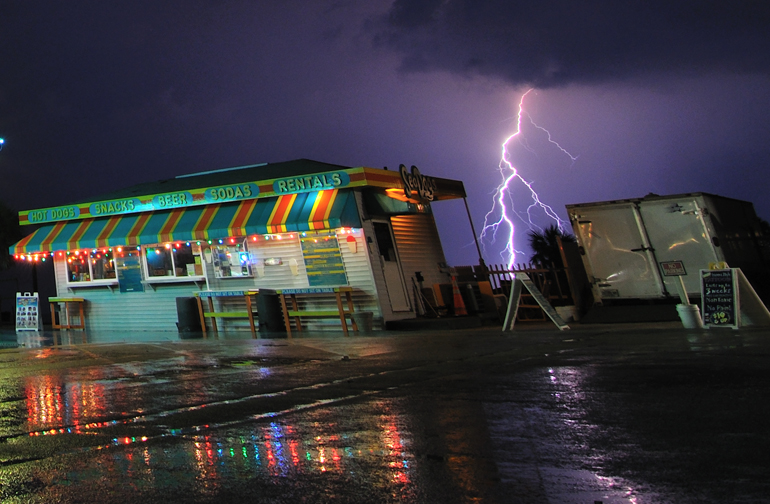

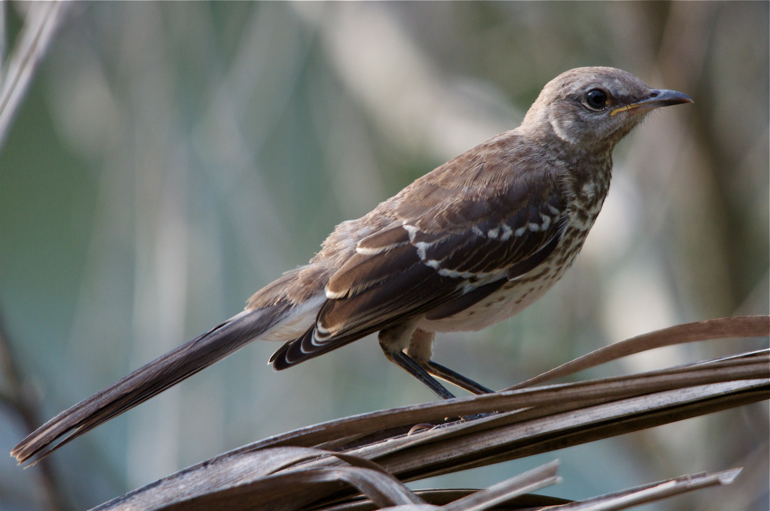

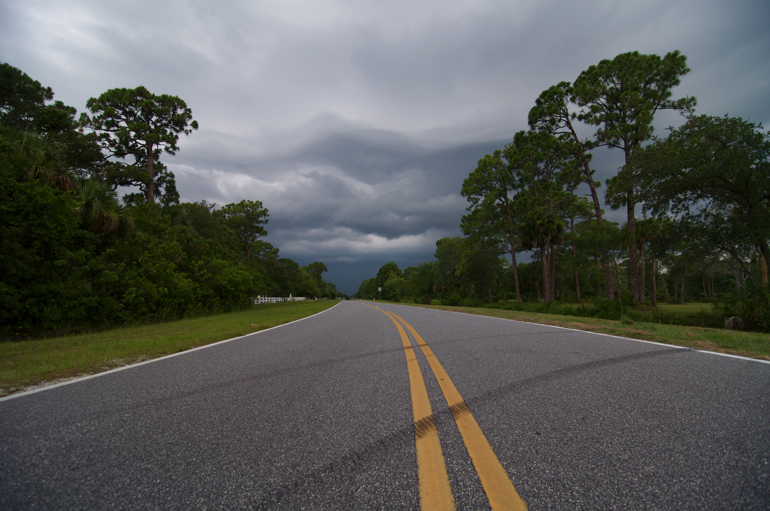
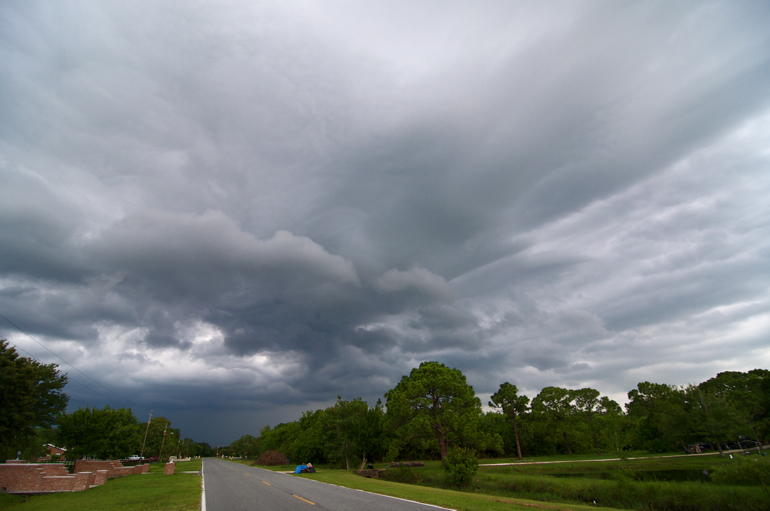
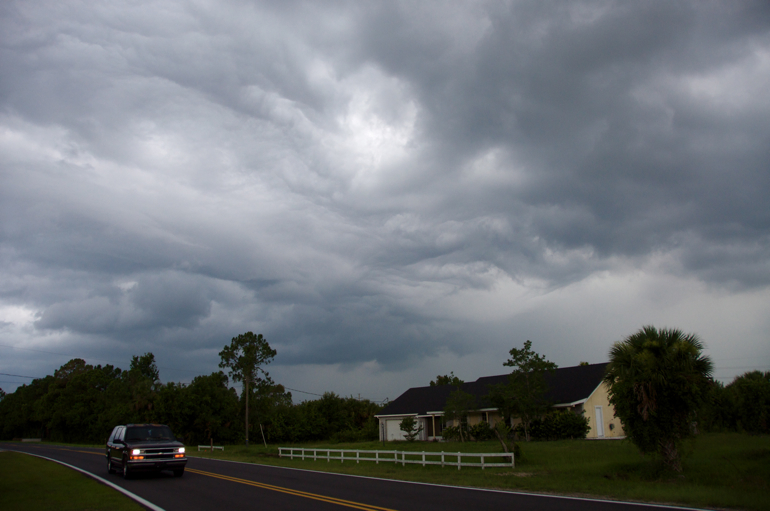
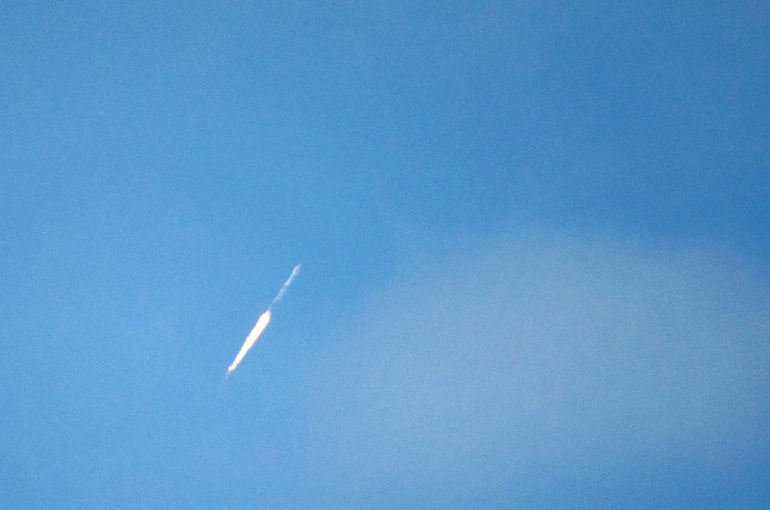
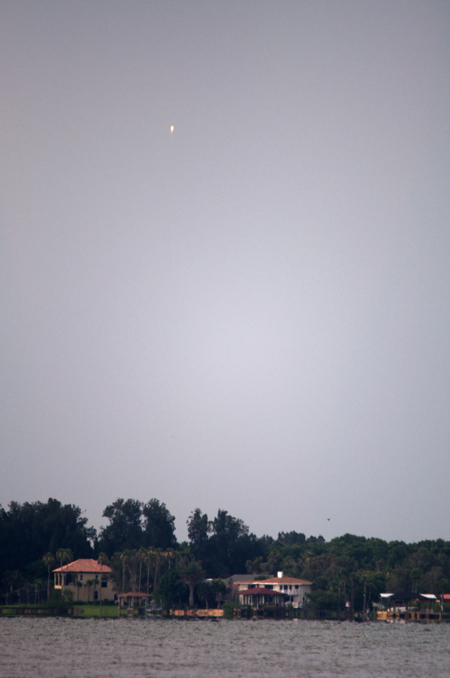 I've pledged never to miss photographing another rocket launch as long as I'm a resident of the Space Coast. Thursday's liftoff of an Atlas V with two NASA lunar explorers presented more of a problem than usual, though. In a configuration without solid rocket boosters, the Atlas V leaves only a faint smoke trail, and the flame itself is minimal. Also, I was at work in Melbourne, about 30 miles south of Cape Canaveral Air Force Station. That made for little to actually photograph when the weather cleared for liftoff at 5:32 p.m.
I've pledged never to miss photographing another rocket launch as long as I'm a resident of the Space Coast. Thursday's liftoff of an Atlas V with two NASA lunar explorers presented more of a problem than usual, though. In a configuration without solid rocket boosters, the Atlas V leaves only a faint smoke trail, and the flame itself is minimal. Also, I was at work in Melbourne, about 30 miles south of Cape Canaveral Air Force Station. That made for little to actually photograph when the weather cleared for liftoff at 5:32 p.m.


